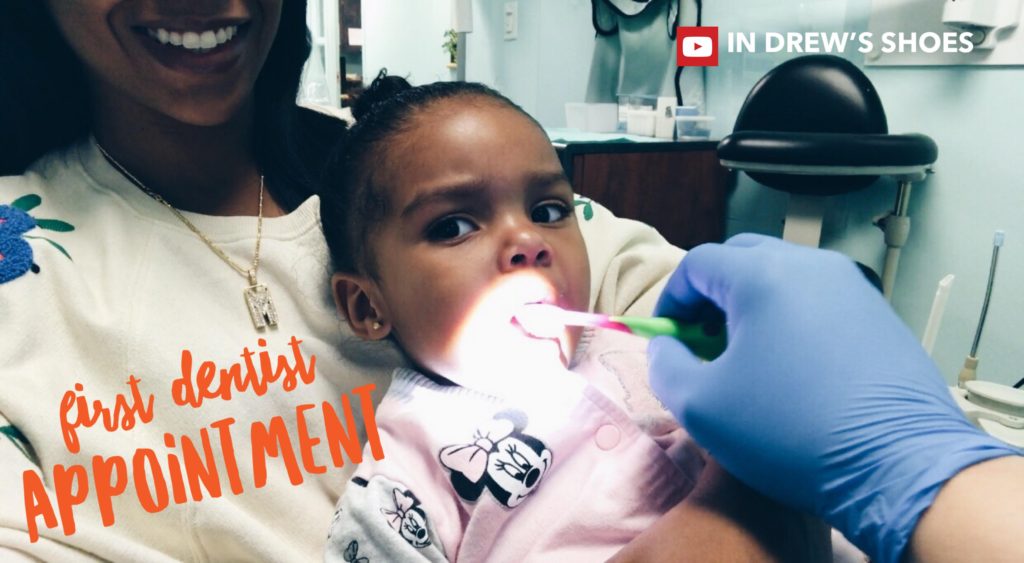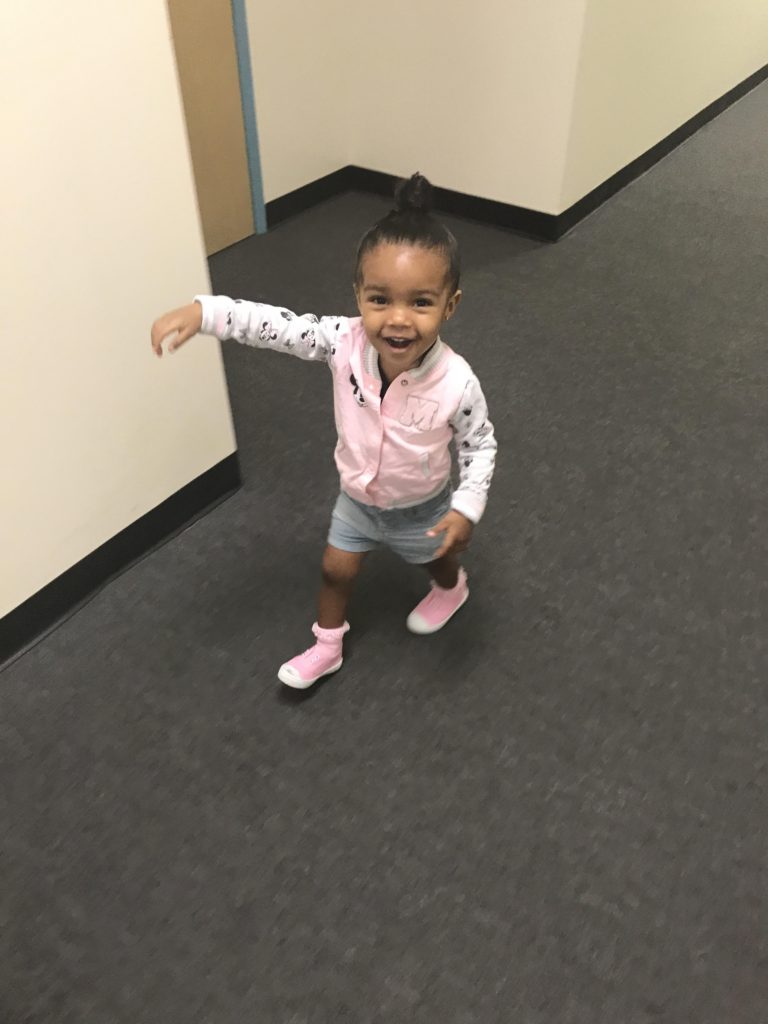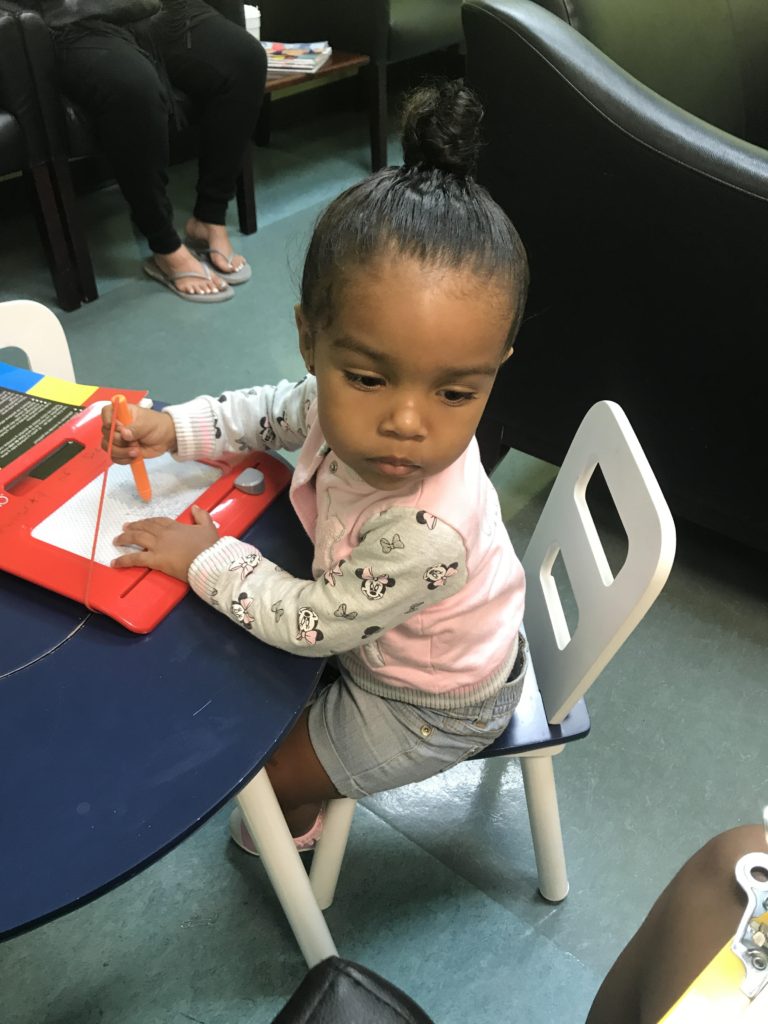
This post may contain affiliate links, which means I'll receive a commission if you purchase through my link, at no extra cost to you.
Today was AnnDrew’s first dentist appointment! I am always so hype for the “firsts”, so today was no different! The early months and years for babies and toddlers are filled with allllll the cool firsts, so I’ve been hype for about 2 years straight LOL! The best time to start taking kids for dental check-ups is either when their first tooth erupts, or right around their first birthday. Yes, I am a bit late taking AnnDrew, but our schedules are crazyyyy. I’ve been brushing her teeth every morning and right before bed since her teeth came in, so I wasn’t worried about anything being wrong. I also have her doctor take a peek at them when she has a checkup. While some pediatricians do a basic check in the mouth, not all do, and dentists are trained to immediately identify any potential issues with the growth and development of the jaw and soft palate. Baby teeth are more porous and susceptible to decay than adult teeth, so early intervention is critical to help ensure those tiny teeth stay healthy. If your child is a little bit older and hasn’t yet had their first dental visit, it’s never too late. Bring them in as soon as you can!
Y’all see my baby teeth knowledge lol aayyyyeeeee! If you didn’t know, I went to school for nursing so I know my stuff when it comes to health 😉


My suggestion is that parents start brushing their child’s teeth as soon as they start coming in, using a soft bristled or baby-safe toothbrush and plain water. I have only used water on her teeth up until now. The easiest way to create healthy, lasting toothbrushing habits is to start early and be consistent. Toothbrushing is an important part of our daily self-care and grooming habits, and just like other habits, babies and toddlers learn as they become more independent. Little ones can practice the motions of brushing their teeth, but ultimately an adult will need to brush properly. A great way to introduce little ones to toothbrushing is to make it a group activity! Parents and kids can brush their teeth “together” with little ones. But make sure you watch them with the toothbrush because that is an accident waiting to happen if they trip with it in their mouth.
Toddlers can be monsters when they want lol, so they might not be cooperative all the time. A good suggestion is to use the “First this, then that” approach to encourage them getting into brushing. For example, “First, we’ll brush our teeth, then we’ll play a game.” This way, the toothbrushing routine becomes a positive part of the day, and followed by something fun they like to do.
Her first dentist appointment was great, so I made a list of what you can expect when you take your kid to the dentist for the first time. Check out our mini VLOG of her visit! Make sure to like the video and subscribe to our channel!
What to Expect
Meeting and Greeting
To make sure your child feels comfortable, formally introduce him to the dentist on his first visit. A good children’s dentist will explain each step of the checkup with your child, show him the tools she’ll be using, and assure him that he can sit on Mommy’s or Daddy’s lap and stop any procedure if he’s nervous.
Learning the Facts
Using models, an oversize brush, and “cavity creep” finger puppets, the dentist will show your child how to brush with your help. A dentist may also explain how the cavity creeps come out at night to harm teeth and how eating nutritious meals and drinking plenty of water keeps teeth healthy. She’ll also use this time to address your questions and concerns.
Mastering the Machinery
Because the spitting cup may make some scary sucking noises, the dentist will show your child how it works and how to spit into it properly. Then she’ll put on a mask and gloves to count your child’s teeth, using the model — or you — to demonstrate before putting her fingers in his mouth.
Cleaning and Polishing
Next, the dentist will polish your child’s teeth with a rotary toothbrush. Make sure the staff provides him with goggles or sunglasses to protect his eyes in case a tool slips or toothpaste sprays. Letting the child see and hear the brush before it’s placed in his mouth helps put him at ease. Babies/toddlers will not get a machine brush, just a regular brush.
Finishing Touches
As with the other procedures she performs, the dentist will show your child how the sucking straw works before she uses it to remove extra toothpaste and saliva. Again, that is for older children. As a final step, the dentist may apply a coat of topical fluoride. A child should not eat or drink for 30 minutes after a treatment.
Picking a Prize – The BEST part
Stickers, finger puppets, crayons, key chains — the more varied the grab bag, the better. Prizes are a great way to get kids to think the dentist’s office is a fun place. You may want to let your child pick a prize during the cleaning if he seems nervous. But if he gets genuinely upset, he may not be ready for his first visit. In that case, cut it short and try again in a few weeks/months.
Good Habits at Home
Follow these tips to put your child on the road to a bright, healthy smile.
- Stop sucking habits as soon as possible. They lead to potential tooth misalignment.
- Choose a soft, kid-size brush. Replace the brush every three months.
- Use no more than a pea-size amount of toothpaste on your child’s brush. This offers adequate fluoride and protection from fluorosis, a damaging oral condition caused by overingestion of fluoride.
- Help your toddler brush after breakfast and before bed. The American Academy of Pediatric Dentistry recommends that children under 8 brush with parents’ help.
- Avoid starchy and sugary snacks. They stick to teeth and increase the risk of decay.
- If your child is unable to brush, rinse her mouth with water to wash away food particles and sugar.
- Call your community’s water department to find out whether your water is fluoridated, and talk to your dentist about the best fluoride treatment.
Awww yay for no cavities ! Great job Mom!